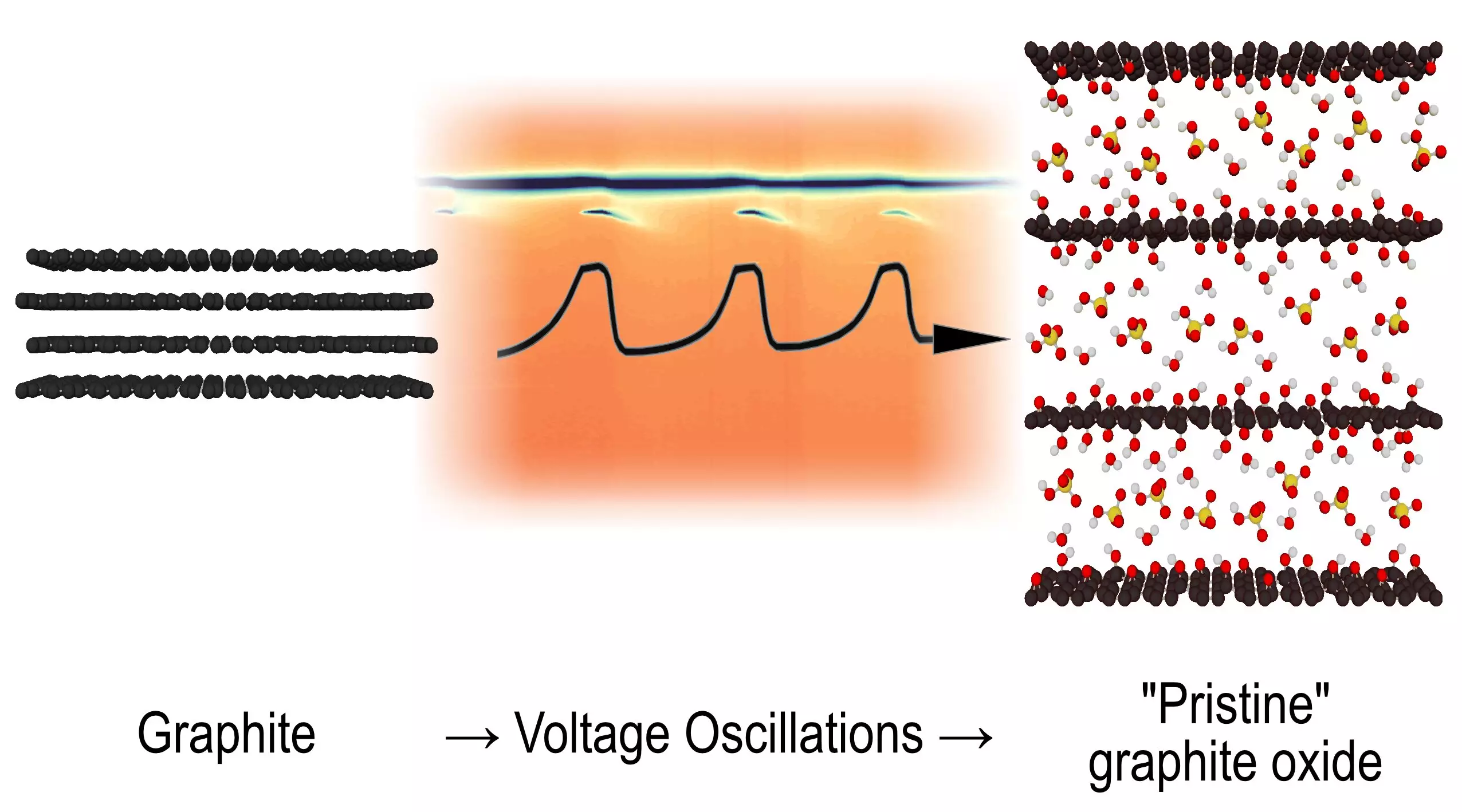For decades, the scientific community has grappled with the complexities of chemical reactions, particularly those that exhibit oscillatory behavior. While the phenomenon has been observed in various contexts, its underlying mechanisms have remained obscured. However, recent research conducted at Umeå University has illuminated a specific reaction involving the transformation of graphite into graphite oxide during electrochemical oxidation. This discovery not only solves a long-standing mystery but also introduces an entirely new category of oscillating reactions that could redefine our understanding of complex chemical systems.
Oscillating chemical reactions are a captivating area of study, bridging the gap between chemistry and natural phenomena. Unlike static reactions that reach an equilibrium state, oscillating reactions display dynamic behavior characterized by periodic changes in the properties of the reactants and products. A classical example can be observed in the iconic Belousov-Zhabotinsky reaction, known for its vivid color oscillations. These reactions serve as vital models for understanding how complex systems can evolve, revealing the intricate interplay between various parameters such as concentration and reaction rates. The recent findings from Umeå University highlight a new facet of such reactions and their potential implications for both theoretical inquiry and practical applications.
The research team at Umeå University has utilized advanced synchrotron techniques that allow for high-speed X-ray diffraction scans, capturing the fleeting structural transformations of materials during the electrochemical oxidation of graphite. This technological leap has enabled researchers to observe intermediate structures that manifest at different stages of the oscillation cycle. The experiments revealed a particular structure that emerges, disappears, and re-emerges as the reaction progresses, creating a rhythm reminiscent of biological oscillations that were previously considered exclusive to organic systems. This observation is not just an academic curiosity; it could pave the way for new research avenues in materials science and chemistry.
Alexandr Talyzin, a professor at Umeå University and a key player in the research, aptly described this phenomenon as a novel type of oscillating reaction. The discovery challenges preconceived notions that oscillations are limited to organic reactions, extending it into the realm of inorganic chemistry. Earlier hypotheses on oscillation mechanisms, largely grounded in theories established by Nobel laureate Ilya Prigogine, primarily focused on processes within closed systems. This new category raises questions about the universality of such phenomena, suggesting that oscillatory behaviors may be far more pervasive within chemical reactions than previously acknowledged.
The implications of this groundbreaking study stretch beyond the immediate realm of chemical kinetics. By unveiling a new mechanism of oscillation in inorganic chemistry, researchers may have sowed the seeds for an entirely new theoretical framework. As Talyzin aptly notes, such discoveries often spur the formulation of new theories, which could lead to a deeper understanding of reaction mechanisms across various scientific fields. The potential to uncover similar oscillating reactions in other chemical systems speaks to the vast frontier of inquiry that remains unexplored.
The research conducted at Umeå University represents a significant leap forward in our understanding of chemical reactions, particularly the oscillating ones that continue to intrigue scientists worldwide. By observing and documenting the behaviors of graphite during electrochemical oxidation, the researchers have not only solved a 50-year riddle but have also opened new avenues for exploration in both theoretical and applied chemistry. This work serves as a reminder of how scientific inquiry can lead to unexpected discoveries and innovations, inciting curiosity that propels the field forward. As researchers continue to delve into the mysteries of oscillating reactions, we may soon find ourselves on the brink of a wider understanding of life’s chemical intricacies.

